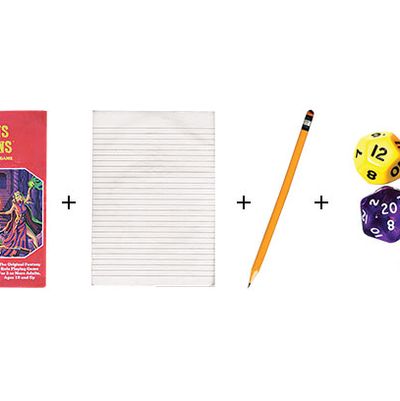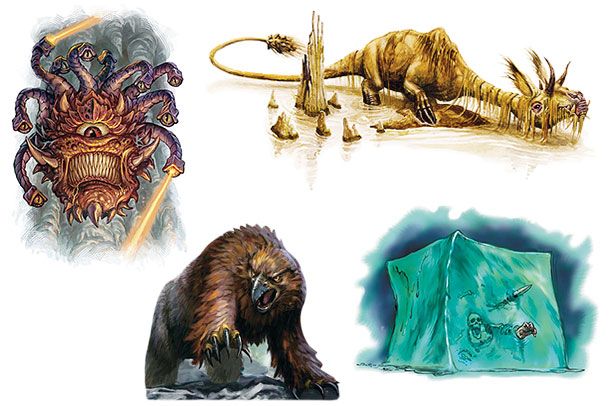
Published 40 years ago this month, the first edition of Dungeons & Dragons promised “a world where the fantastic is fact and magic really works!” To outsiders, it may seem impenetrably complex or impossibly nerdy, but the tabletop role-playing game has inspired a generation of writers and filmmakers and is credited with giving birth to the modern video-game industry. (Community creator Dan Harmon cited it as one of his main influences in New York Magazine.) And now, a birthday review.
Players Worldwide:
More than 30,000,000
How to Play
Short version
Sit down with friends and pretend you’re the heroes of a fantasy story narrated by one of the participants (“the Dungeon Master”) and mediated by a few rules and rolling dice.
Long version
Study more than 300 rule books and supplements. Spend hundreds of dollars on dice, figurines, and maps. Find friends who are willing to do the same.
The Origin Story
War-gaming fans start a club called the Castle & Crusade Society where Dave Arneson, security guard, and E. Gary Gygax, part-time cobbler, meet. Together they author the first-edition rules.
Fan-Favorite Monsters (clockwise from upper left)
- The Beholder: A giant floating orb with one Cyclopean eye, a mouth full of pointy teeth, and ten smaller eyes.
- The Catoblepas: A bison’s body, a hippo’s legs, a giraffe’s neck, a lizard’s tail, and a warthog’s head.
- The Gelatinous Cube: A mound of transparent jelly that fills an entire dungeon hallway and digests anything it touches.
- The Owlbear: A large bear covered in fur and feathers, with the sharp beak of a bird.

Sample Vocabulary
- Campaign: An entire D&D adventure, usually continued across multiple game sessions, sometimes years.
- Critical hit: An attack that does extra damage, usually obtained by rolling twenty on a twenty-sided die.
- Monty haul: A derogatory term for a Dungeon Master who awards his players too much treasure.
- Munchkin: A player who exploits the rules to his advantage, to the detriment of the story and everyone else’s fun.
Famous Players
- In television: Stephen Colbert created D&D characters based on the personalities of his eleven brothers and sisters.
- In film: Jon Favreau says that D&D helped make him a good director. “It gave me a really strong background in imagination.”
- In books: The protagonist of Junot Díaz’s Pulitzer Prize–winning novel The Brief Wondrous Life of Oscar Waois a devoted D&D player.
D&D in Popular Culture
- “Discos and Dragons,” the 2000 final episode of Freaks and Geeks, features James Franco’s character, Daniel, playing D&D for the first time.
- Weezer’s “In the Garage” begins with the lyrics: I’ve got the Dungeon Master’s Guide / I’ve got a twelve-sided die.
- In E.T. The Extraterrestrial, young protagonist Elliott appears onscreen trying to talk his way into his brother’s D&D game.
David M. Ewalt is the author of the book Of Dice and Men: The Story of Dungeons & Dragons and the People Who Play It (Scribner).




